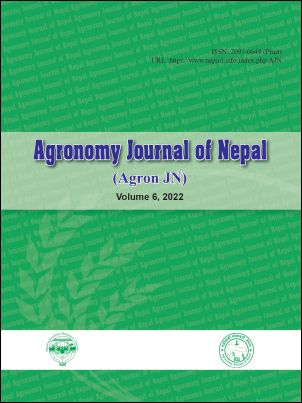Conservation Agriculture in Maize-based Cropping System of Nepal: A Review
DOI:
https://doi.org/10.3126/ajn.v6i1.47953Keywords:
Crop rotation, maize-based system, tillage, residue retentionAbstract
Maize-based cropping system followed by intensive tillage and faulty practices often associated with many negative implications such as the decline of soil organic matter, increase soil erosion by wind/water, lower nutrient-use efficiency, field burning of crop residue, air pollution mainly attributed to the monoculture of intensive conventional production systems leading to global warming and decline in factor productivity. Conservation Agriculture (CA) underlying principles of minimal soil disturbance, soil cover and crop rotation are increasingly recognized as an essential for the sustainability of this cropping system. Therefore, a brief review was done to find out the results its constraints and the possible interventions under a maize-based system of Nepal. Very few works under CA is done so far under maize-based cropping system of Nepal, however, the results are encouraging. There are some constraints in CA technologies promotion, such as scale-neutral agri-machineries, crop residues competition between CA use and livestock feeding, skilled and scientific manpower availability and overcoming the bias or mindset about tillage. CA provide opportunities to reduce the cost of production, improve resource use efficiency, saves water and nutrients and increase yield. There is a need to develop and promote low-cost technologies of CA that can be used effectively in maize based system of hills and Terai.
Downloads
Downloads
Published
How to Cite
Issue
Section
License
Copyright (c) 2022 Agronomy Society of Nepal (ASoN)

This work is licensed under a Creative Commons Attribution-NonCommercial 4.0 International License.
ASON permits for free use, distribution and reproduction in any medium if the original work is properly cited and not used for commercial purposes.




